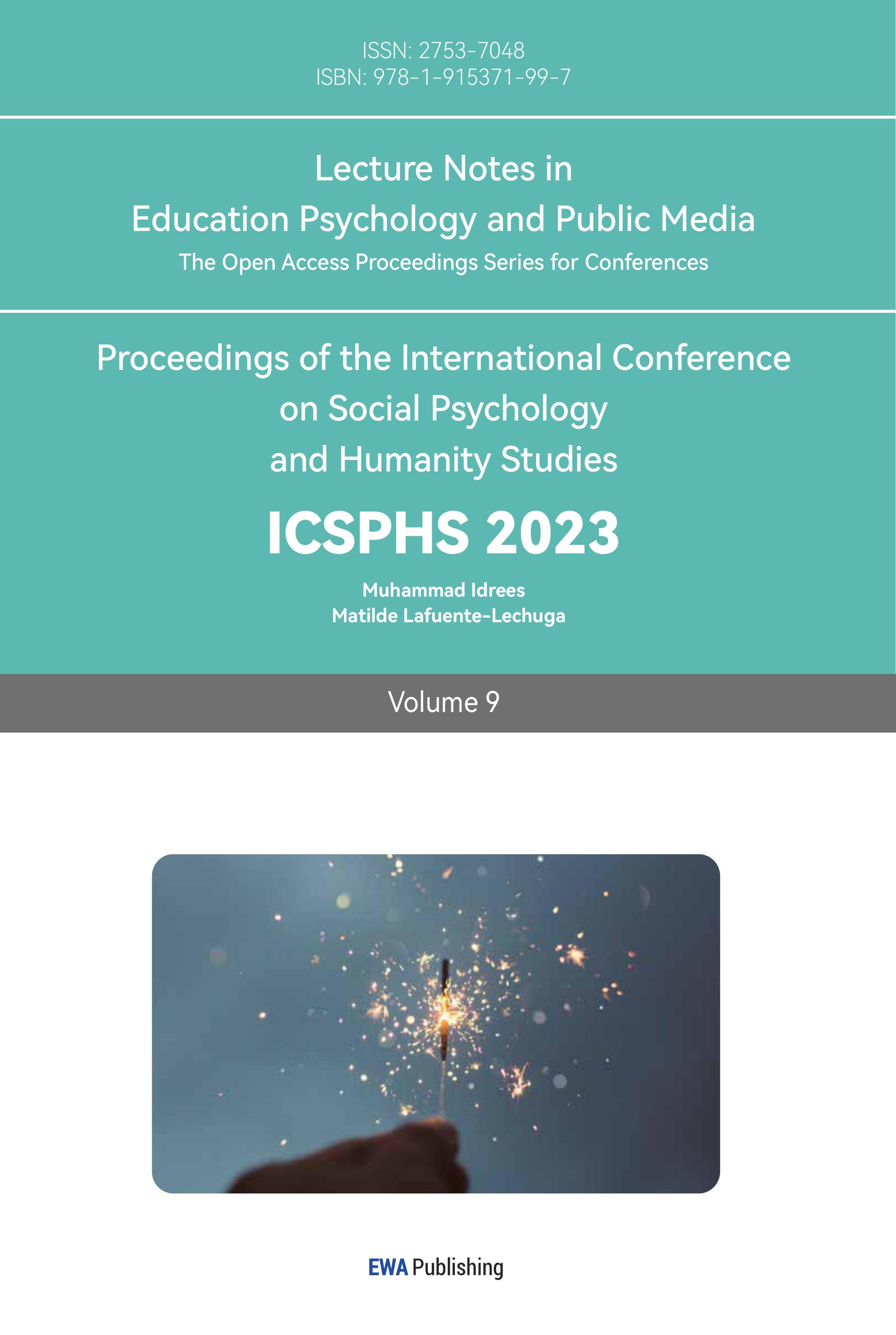References
[1]. Yang, Jidong. "Transportation, Boarding, Lodging, and Trade along the Early Silk Road: A Preliminary Study of the Xuanquan Manuscripts." Journal of the American Oriental Society 135, no. 3 (2015): 421-32. https://doi.org/10.7817/jameroriesoci.135.3.421.
[2]. Ma, Tsang Wing. "12.B Excavated Texts" In Handbook of Ancient Afro-Eurasian Economies: Volume 1: Contexts edited by Sitta Reden, 529-556. Berlin, Boston: De Gruyter Oldenbourg, 2019. https://doi.org/10.1515/9783110607741-019.
[3]. Crespigny, Rafe de. "South China in the Han period." 2004. Accessed August 30, 2022. https://web.archive.org/web/20160816181309/https://digitalcollections.anu.edu.au/html/1885/42048/southchina_han.html.
[4]. "Dunhuang." UNESCO. Accessed August 30, 2022. https://en.unesco.org/silkroad/content/dunhuang.
[5]. "Economy of Ancient China." Time Maps. Accessed August 30, 2022. https://www.timemaps.com/encyclopedia/ancient-china-economy-2/#:~:text=Government%20support&text=The%20political%20stability%20of%20the,new %20farming%20techniques%20and%20inventions.
[6]. "Camels." American Museum of Natural History. Accessed August 30, 2022. https://www.amnh.org/exhibitions/traveling-the-silk-road/take-a-journey/samarkand/camels#:~:text=Adapted%20to%20the%20harsh%20desert,)%2D%2Dand%20needed%20less%20water.
[7]. Blaydes, Lisa, and Christopher Paik. "Trade and Political Fragmentation on the Silk Roads: The Economic Effects of Historical Exchange between China and the Muslim East." Last modified December 2019. PDF.
[8]. Yii, Kwang-Jing & Bee, Kai-Ying & Cheam, Wei-Yong & Chong, Yee-Lee & Lee, Ching-Mei. (2018). Is Transportation Infrastructure Important to the One Belt One Road (OBOR) Initiative? Empirical Evidence from the Selected Asian Countries. Sustainability. 10. 4131. 10.3390/su10114131.
[9]. Fölster, Max Jakob and Staack, Thies. "Collation in Early Imperial China: From Administrative Procedure to Philological Tool" In Exploring Written Artefacts: Objects, Methods, and Concepts edited by Jörg B. Quenzer, 889-912. Berlin, Boston: De Gruyter, 2021. https://doi.org/10.1515/9783110753301-043.
Cite this article
Zhang,J. (2023). The Effects of Transportation Infrastructure for Trade Development in Han China in the Early Silk Road. Lecture Notes in Education Psychology and Public Media,9,46-51.
Data availability
The datasets used and/or analyzed during the current study will be available from the authors upon reasonable request.
Disclaimer/Publisher's Note
The statements, opinions and data contained in all publications are solely those of the individual author(s) and contributor(s) and not of EWA Publishing and/or the editor(s). EWA Publishing and/or the editor(s) disclaim responsibility for any injury to people or property resulting from any ideas, methods, instructions or products referred to in the content.
About volume
Volume title: Proceedings of the International Conference on Social Psychology and Humanity Studies
© 2024 by the author(s). Licensee EWA Publishing, Oxford, UK. This article is an open access article distributed under the terms and
conditions of the Creative Commons Attribution (CC BY) license. Authors who
publish this series agree to the following terms:
1. Authors retain copyright and grant the series right of first publication with the work simultaneously licensed under a Creative Commons
Attribution License that allows others to share the work with an acknowledgment of the work's authorship and initial publication in this
series.
2. Authors are able to enter into separate, additional contractual arrangements for the non-exclusive distribution of the series's published
version of the work (e.g., post it to an institutional repository or publish it in a book), with an acknowledgment of its initial
publication in this series.
3. Authors are permitted and encouraged to post their work online (e.g., in institutional repositories or on their website) prior to and
during the submission process, as it can lead to productive exchanges, as well as earlier and greater citation of published work (See
Open access policy for details).
References
[1]. Yang, Jidong. "Transportation, Boarding, Lodging, and Trade along the Early Silk Road: A Preliminary Study of the Xuanquan Manuscripts." Journal of the American Oriental Society 135, no. 3 (2015): 421-32. https://doi.org/10.7817/jameroriesoci.135.3.421.
[2]. Ma, Tsang Wing. "12.B Excavated Texts" In Handbook of Ancient Afro-Eurasian Economies: Volume 1: Contexts edited by Sitta Reden, 529-556. Berlin, Boston: De Gruyter Oldenbourg, 2019. https://doi.org/10.1515/9783110607741-019.
[3]. Crespigny, Rafe de. "South China in the Han period." 2004. Accessed August 30, 2022. https://web.archive.org/web/20160816181309/https://digitalcollections.anu.edu.au/html/1885/42048/southchina_han.html.
[4]. "Dunhuang." UNESCO. Accessed August 30, 2022. https://en.unesco.org/silkroad/content/dunhuang.
[5]. "Economy of Ancient China." Time Maps. Accessed August 30, 2022. https://www.timemaps.com/encyclopedia/ancient-china-economy-2/#:~:text=Government%20support&text=The%20political%20stability%20of%20the,new %20farming%20techniques%20and%20inventions.
[6]. "Camels." American Museum of Natural History. Accessed August 30, 2022. https://www.amnh.org/exhibitions/traveling-the-silk-road/take-a-journey/samarkand/camels#:~:text=Adapted%20to%20the%20harsh%20desert,)%2D%2Dand%20needed%20less%20water.
[7]. Blaydes, Lisa, and Christopher Paik. "Trade and Political Fragmentation on the Silk Roads: The Economic Effects of Historical Exchange between China and the Muslim East." Last modified December 2019. PDF.
[8]. Yii, Kwang-Jing & Bee, Kai-Ying & Cheam, Wei-Yong & Chong, Yee-Lee & Lee, Ching-Mei. (2018). Is Transportation Infrastructure Important to the One Belt One Road (OBOR) Initiative? Empirical Evidence from the Selected Asian Countries. Sustainability. 10. 4131. 10.3390/su10114131.
[9]. Fölster, Max Jakob and Staack, Thies. "Collation in Early Imperial China: From Administrative Procedure to Philological Tool" In Exploring Written Artefacts: Objects, Methods, and Concepts edited by Jörg B. Quenzer, 889-912. Berlin, Boston: De Gruyter, 2021. https://doi.org/10.1515/9783110753301-043.









